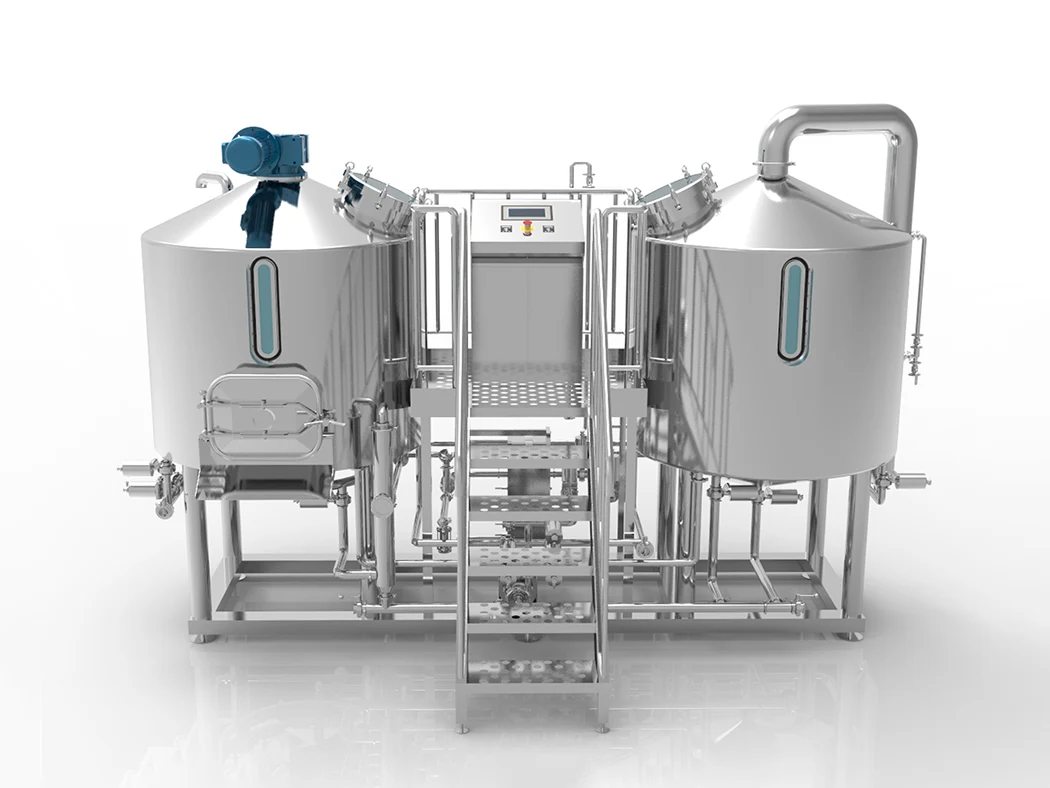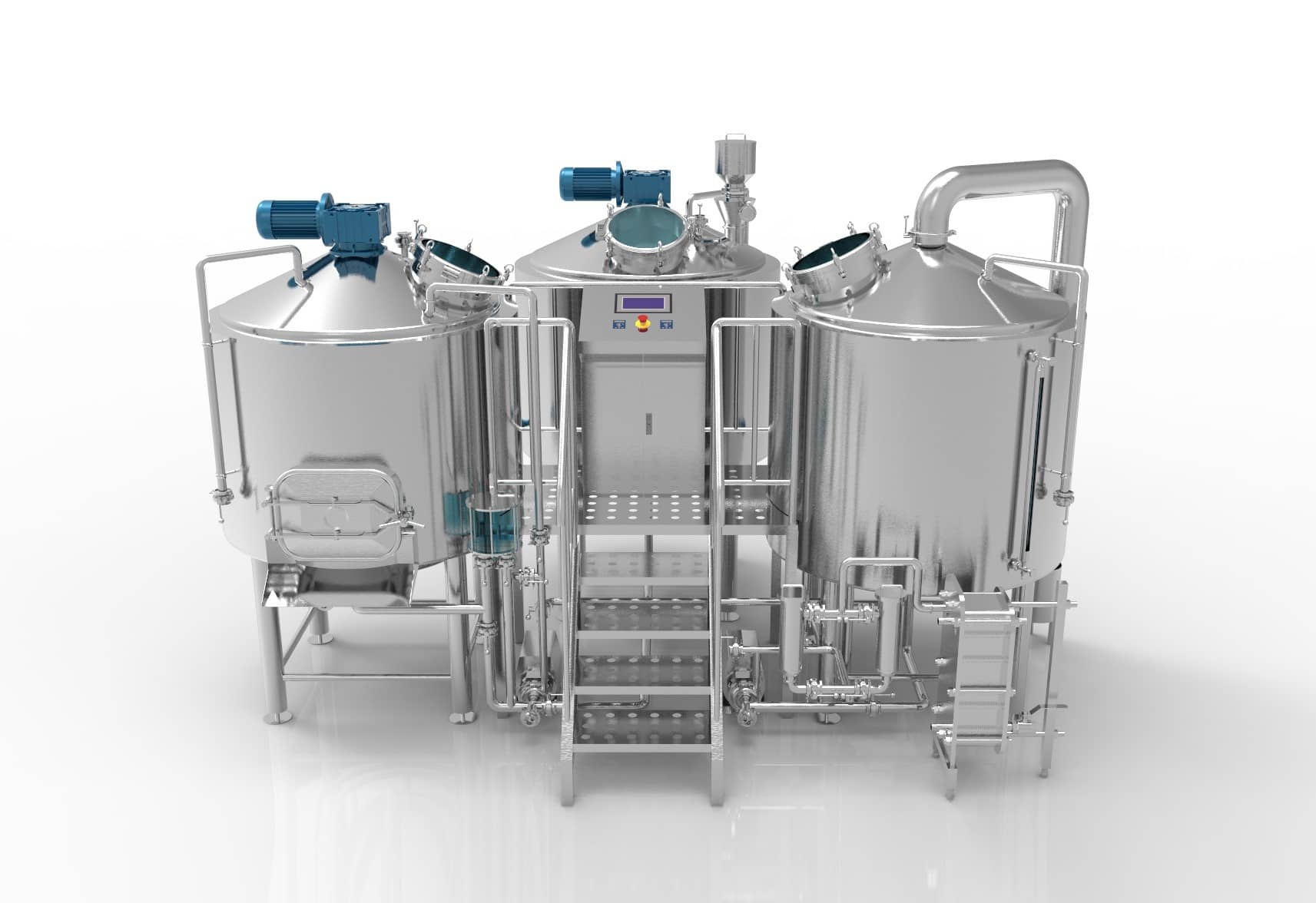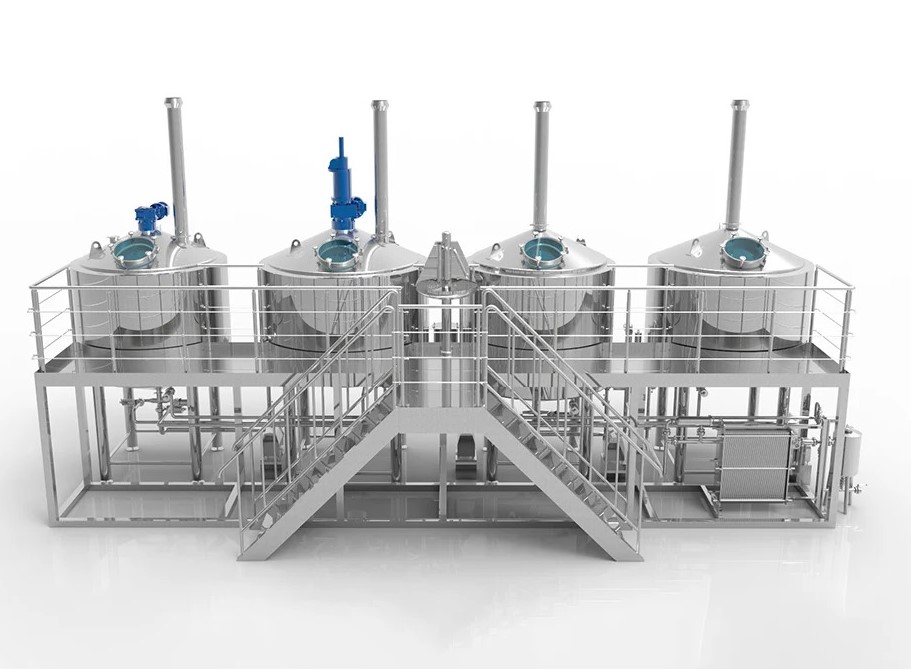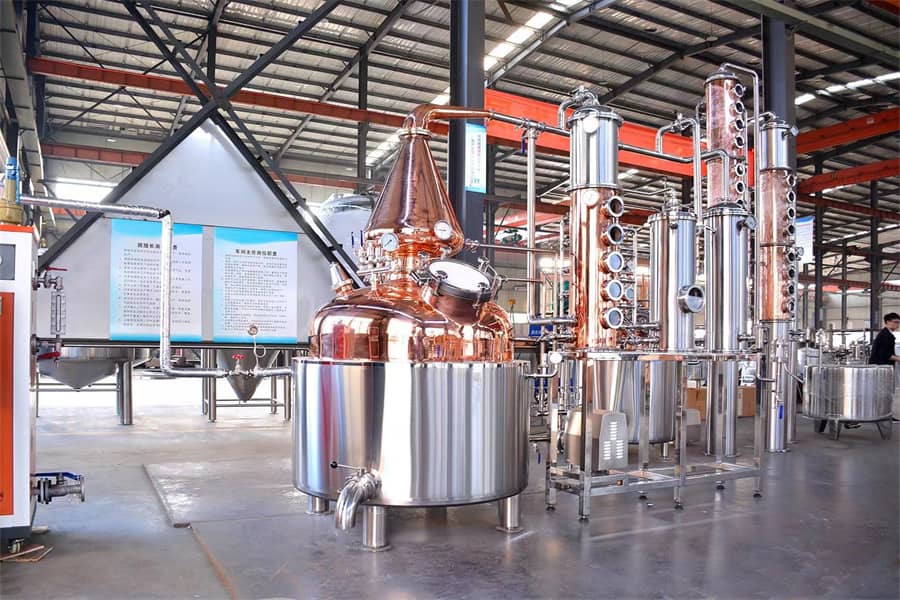Launching or scaling a distillery is exciting—but without the right machinery, your operations can quickly become inefficient, inconsistent, or even non-compliant. From temperature-sensitive mashing to precision-controlled distillation, every step depends on the equipment you choose.
Distillery machinery refers to the essential equipment used in distillation processes for producing spirits like whiskey, vodka, gin, and rum. This includes stills, fermenters, mash tuns, reflux columns, and other components that ensure quality, consistency, and regulatory compliance for commercial or micro-distilleries.
What Is Distillery Machinery?
Distillery machinery encompasses all the major components and systems involved in the distillation process—from grain handling to mashing, fermentation, distillation, and even bottling. A well-designed distillation system is critical whether you operate a micro-distillery or a full-scale commercial distillery.
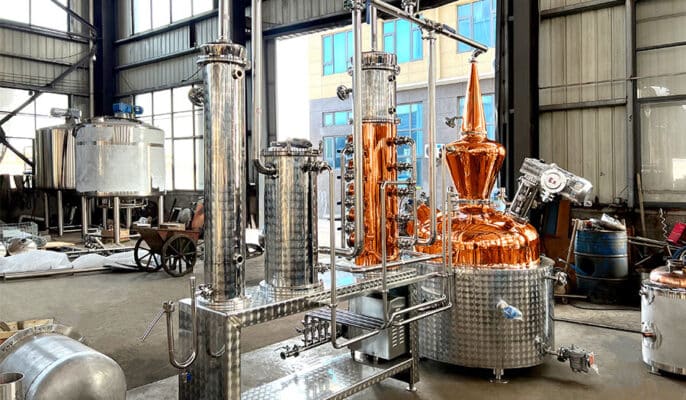
The major pieces of equipment in a distillery typically include:
-
Mash tun or lauter tun for preparing the mash
-
Fermenters for converting sugars into alcohol
-
Pot stills, column stills, or reflux stills for distillation
-
Condensers and cooling systems
-
Storage and aging vessels like oak barrels
-
CIP (clean-in-place) systems for hygiene compliance
By integrating these systems, distilleries gain full control over alcohol content, flavor development, and production efficiency. Whether you’re producing vodka, gin, brandy, or rum, reliable machinery ensures repeatable results and scalability.
What Equipment Is Needed for a Distillery?
Establishing a distillery requires strategic investment in essential equipment. Your setup may vary depending on spirit type, batch size, production method, and local regulations.
| Equipment Type | Function |
|---|---|
| Mash Tun | Mixes grist with water to create fermentable wort |
| Fermenter | Converts wort into alcohol via yeast activity |
| Still (Pot or Column) | Distills fermented liquid into purified alcohol |
| Condenser | Cools and condenses vapor into liquid distillate |
| Reflux Column | Controls purity level during distillation |
| CIP System | Cleans internal surfaces of tanks and piping systems |
| Cooling System | Manages heat during mashing and distillation |
Every type of still—whether batch stills, stripping stills, or continuous stills—requires precise configuration to match your distillery needs. Additionally, selecting between 50 gallons, 100 gallons, 300 gallons, or 500 gallons setups depends on expected output.
Micet, as an experienced equipment manufacturer, offers turnkey solutions tailored to your floor plan, spirit type, and budget. We support clients globally with technical support, documentation, and third-party product certifications.
What Is the Difference Between Pot Still and Column Still?
When it comes to distillation, choosing the right type of still is fundamental. Two of the most common types are the pot still and the column still, each suited for different production styles and spirit categories.
Pot Still
-
Best for: Whiskey, brandy, and rum
-
How it works: Operates in batches; the fermented mash is heated until alcohol vaporizes and is then condensed.
-
Key features: Lower rectification, richer flavors, traditional style
-
Popular sizes: 150 gallons, 300 gallons
Column Still (also known as Continuous Still)
-
Best for: Vodka, gin, and industrial ethanol
-
How it works: Operates continuously with higher rectification; better suited for neutral spirits
-
Key features: Greater efficiency, higher alcohol purity, less flavor retention
-
Popular sizes: 500 gallons, modular flute column options
Each still produces different results due to how it separates and purifies the distillate. Many producers use both a stripping still (pot) and a reflux still (column) to handle various stages of the process.
What Is Micro Distillery Equipment?
Micro distillery equipment is designed for small-batch spirit production, often in volumes under 500 gallons. These systems are compact, modular, and typically include all necessary components to produce high-quality distilled products such as whiskey, vodka, or gin at craft scale.
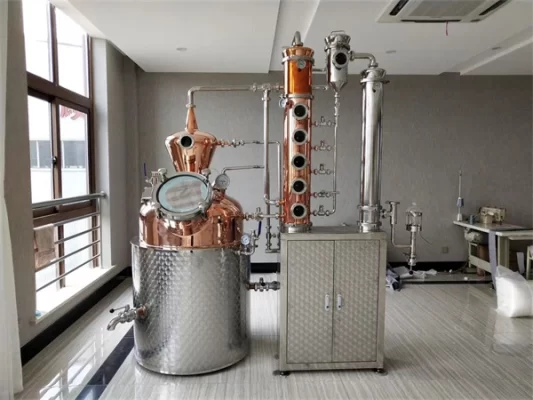
A standard micro distillery setup includes:
-
Mash tuns (50–150 gallons)
-
Fermenters
-
Pot stills or flute column stills
-
CIP systems
-
Cooling systems for condensation
-
Control units with digital interface
Micro setups are ideal for experimental batches, product development, and local retail production. These systems prioritize ease of use, fast cleaning cycles, and high flexibility, enabling small businesses to react quickly to market trends or recipe adjustments.
Micet offers tailored micro distillery solutions using stainless steel and copper stills, all engineered for easy maintenance and scalability. These units comply with commercial regulations while maintaining artisan production standards.
How Does Reflux Work in a Distillation System?
Reflux is a critical mechanism in advanced distillation systems, especially in reflux columns and flute columns used in spirit production. It refers to the portion of vapor that condenses within the column and flows back down, enriching the rising vapor stream with purified alcohol.
Benefits of reflux in distilling:
-
Increased purity: More reflux equals higher alcohol concentration in the final distillate
-
Better separation: Helps isolate heads, hearts, and tails during the distillation process
-
Flavor control: Adjusting reflux allows distillers to control aroma and mouthfeel
A reflux still often contains multiple bubble plates or packing materials to maximize surface contact. This makes them ideal for producing vodka, gin, and other high-proof spirits. Many commercial distillery systems include adjustable reflux control to switch between clean and flavorful spirits depending on the batch.
What Size Distillation Equipment Is Right for You?
Choosing the correct equipment size depends on your business model, licensing limitations, and expected output. From small 50 gallon units to industrial 500 gallon systems, distilleries must balance investment costs, labor, and production needs.
| Size | Application |
|---|---|
| 50 gallons | Recipe development, test batches |
| 100 gallons | Small production, local distribution |
| 300 gallons | Growing craft distilleries |
| 500 gallons | High-volume commercial output |
In many cases, a 150 gallon pot still or a 300 gallon reflux still offers a balance between production flexibility and output volume. Some facilities operate continuous and batch systems side by side, using batch stills for limited-edition spirits and continuous distillation for base ethanol.
Micet helps clients assess capacity needs based on their floor plan, product type, and market objectives. We also consider utility constraints, cooling requirements, and automation needs when recommending configurations.
How to Choose Commercial Distillery Equipment Options
When selecting commercial stills and support systems, several factors go beyond size:
-
Spirit types: Vodka requires higher reflux and more plates, while whiskey stills emphasize flavor preservation
-
Materials: Stainless steel for durability, copper for flavor control
-
Automation: Manual vs. semi-automated vs. fully digital systems
-
CIP and cleaning: Must meet hygiene regulations and simplify maintenance
-
Compliance: Meet certifications for technical support, safety, and output control
You’ll also need to consider distilling equipment sourcing, from reliable equipment manufacturers with documented installations and post-sale service. Certifications such as CE or UL, paired with documentation for third-party product certifications, are crucial for export or regulatory approval.
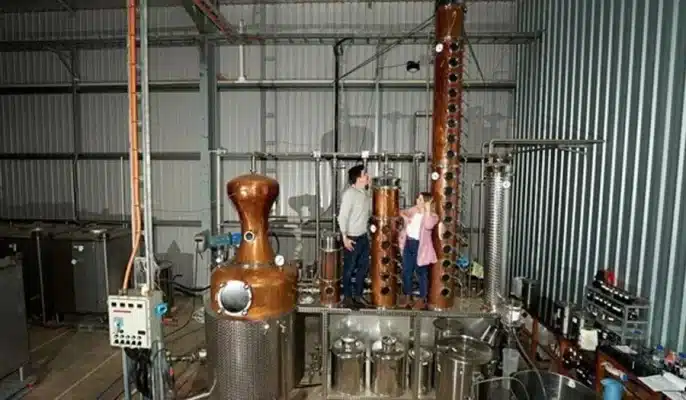
Cleaning, Cooling, and Control Systems in Distilleries
While stills and fermenters do the heavy lifting, support systems make or break a production line. Here’s what’s often overlooked but equally vital:
Cleaning in Place (CIP)
-
Automates internal tank and piping cleaning
-
Reduces labor and downtime
-
Supports HACCP and food safety compliance
Cooling Systems
-
Maintains mash temperature during fermentation
-
Cools vapor in the condenser to produce liquid distillate
-
Often integrated with heat exchangers or closed-loop chillers
Control Panels and Automation
-
Monitor key variables like reflux, flow rate, temperature, and pressure
-
Digitally track batch logs and generate reports
-
Ensure process repeatability and regulatory traceability
Micet offers modular add-ons for temperature, reflux, and vapor flow control, compatible with both pot stills and column stills. Whether you’re producing high-proof ethanol or barrel-aged whisky, your system must deliver safety, consistency, and cleanability.
Frequently Asked Questions
What is the difference between a pot still and a column still?
A pot still operates in batches and is ideal for flavorful spirits like whiskey and brandy. A column still (or reflux still) operates continuously and produces higher-purity alcohol, such as vodka or gin, due to greater rectification.
How much distillery equipment do I need to start a micro-distillery?
A basic setup includes a mash tun, fermenter, pot or column still (50–100 gallons), a condenser, and CIP system. Micet offers turnkey systems for micro-distilleries to begin production at 150–300 gallons per batch.
What type of materials are used in modern stills?
Stills are usually made from stainless steel or copper. Stainless steel provides durability and easy cleaning, while copper interacts with sulfur compounds in the vapor, improving spirit quality and aroma.
What is reflux, and why does it matter?
Reflux is the portion of condensed vapor that returns to the column during distillation. Higher reflux increases purity and alcohol concentration, making it essential for neutral spirits like vodka.
Can I produce different spirits using the same equipment?
Yes, with proper configuration. For example, a hybrid still with a reflux column and modular flute column can handle both gin and whiskey production by adjusting the number of active plates and vapor paths.
What kind of support is available after purchase?
Micet provides full technical support, user manuals, floor plan optimization, and remote troubleshooting. We also assist with certifications and compliance documentation for local and international operations.
Key Takeaways: What to Remember When Choosing Distillery Machinery
-
Distillery equipment is the backbone of any successful spirit production operation.
-
Choose between pot stills for flavor-rich spirits and column stills for higher purity.
-
Plan based on output: from 50 gallons for testing to 500 gallons for commercial production.
-
Don’t overlook support systems: CIP, cooling, and digital automation are essential.
-
Invest in quality: well-built stills and fermentation systems reduce downtime and ensure compliance.
Internal Links
Here are some resources to help you explore specific equipment:
Final Word
If you’re building a distillery from the ground up or upgrading your existing setup, the machinery you choose makes all the difference. From batch stills and mash tuns to advanced reflux stills and digital automation, having the right equipment not only improves efficiency but ensures your product meets both quality expectations and regulatory standards.
Micet is a global provider of stills and micro distillery equipment, offering commercial stills, turnkey solutions, and ongoing technical support to distillers in over 40 countries. Whether you’re focused on whisky, vodka, rum, or gin, we offer distillery equipment options designed to grow with your brand.
Get in touch today to discuss a tailored solution that fits your distillation system, floor plan, and budget.

